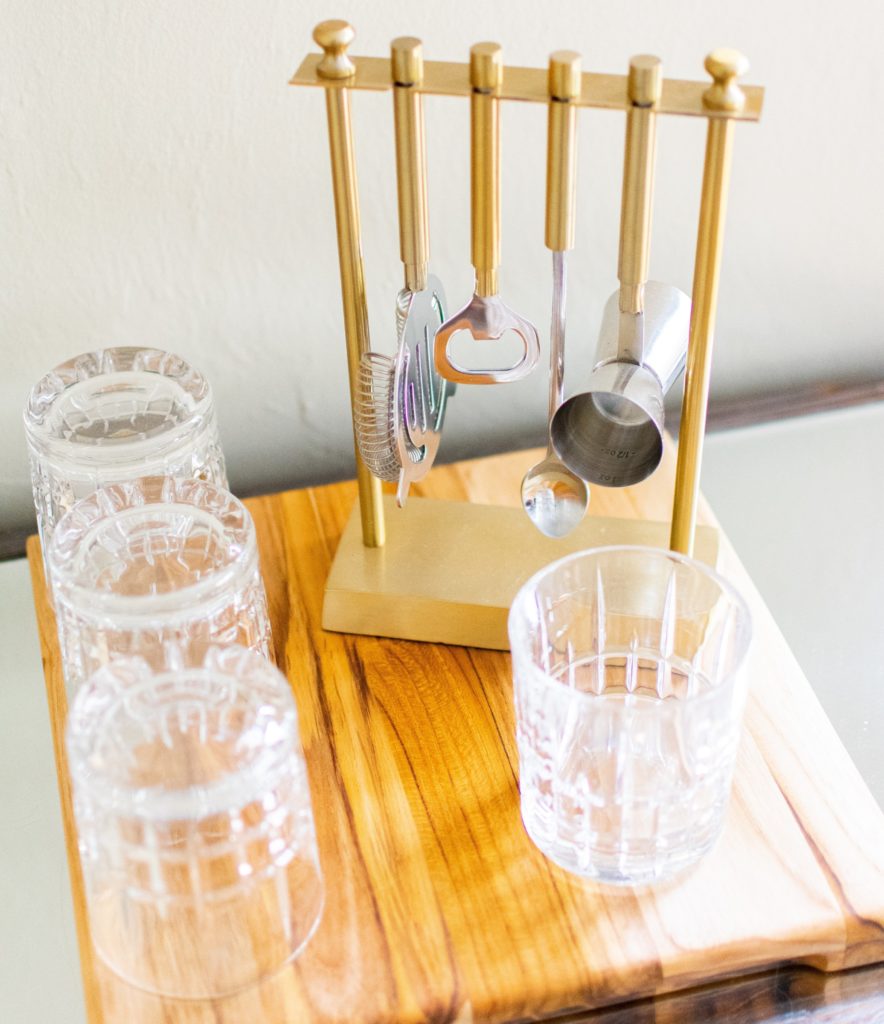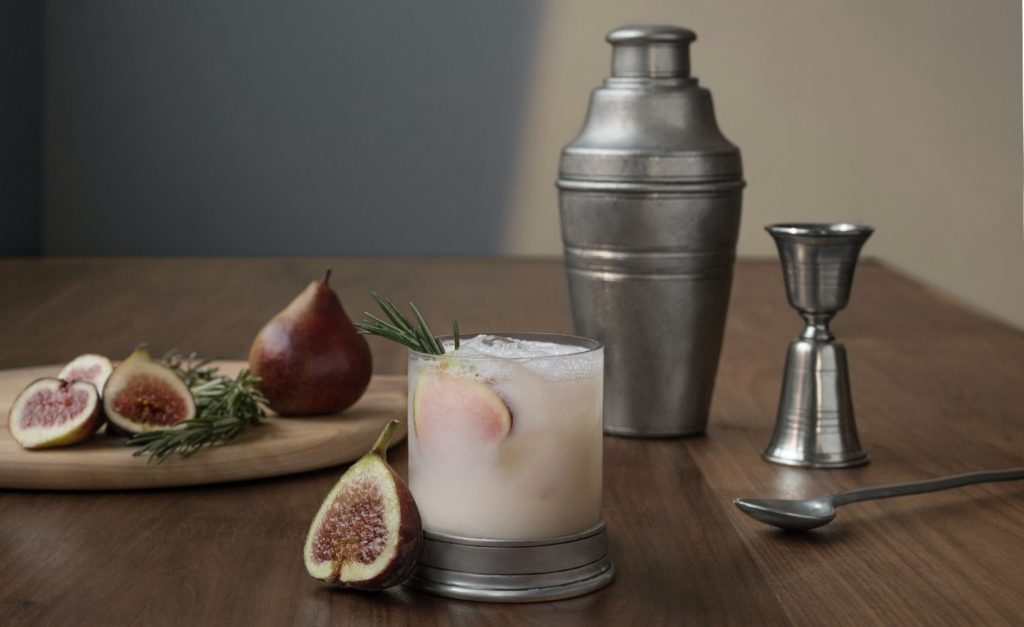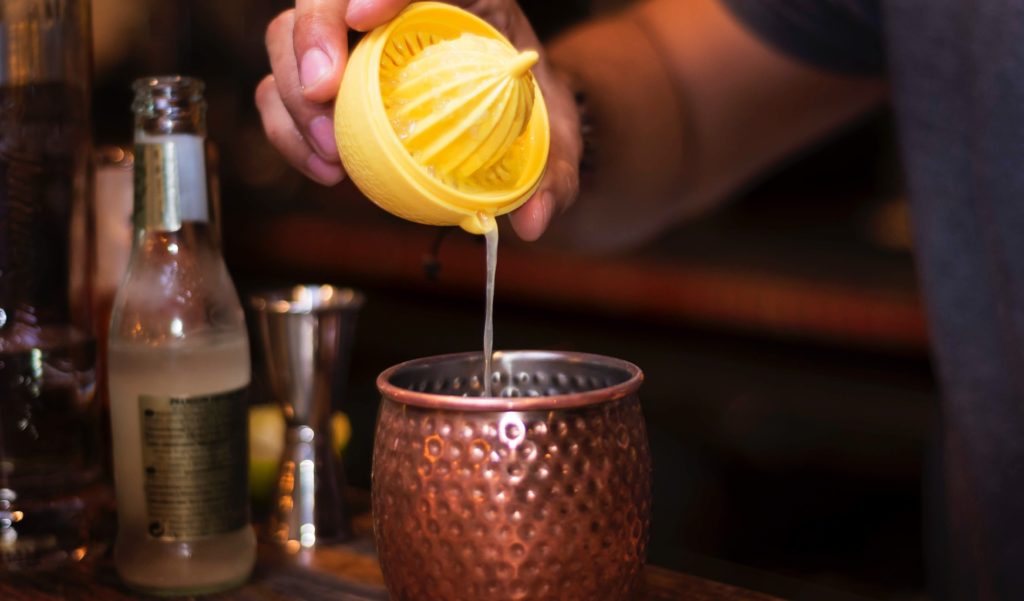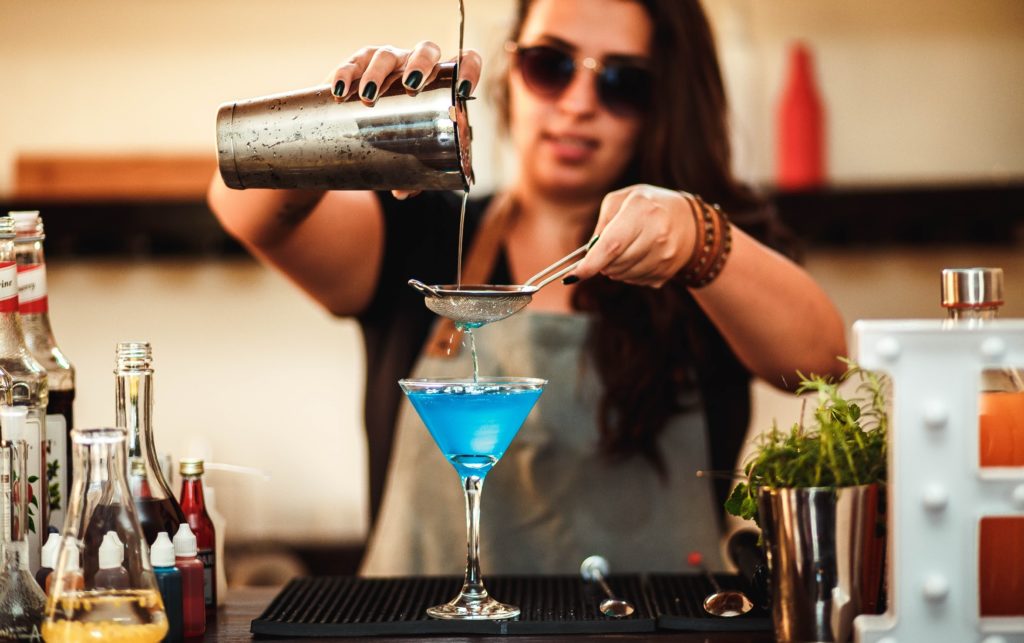Mixology 101: A Beginner’s Guide To Cocktails
Welcome to the wonderful world of cocktails. You can be your own bartender by learning how to make the perfect drink for any occasion. Taking a step into this world can be daunting if you’re getting into cocktails for the first time. Creating a classy, fully-stocked bar in your home can definitely be confusing if you’re not sure where to start.
Enter this guide to mixology from the experts at Saucey, the alcohol delivery company transforming the way you think about your home bar experience. From tequila to whiskey to wine and everything in between, we’ve got you covered.
The best thing about bartending from the comfort of your own home is that you have the ability to experiment. You can try new things, concoct different drinks, and learn about your own preferences without spending hundreds of dollars at a local bar. It can be a great introduction to mixology, thanks to the wide range of bartending tools available, the number of exciting ingredients you can have on hand, and the variety of flavors you’ll be able to try out. It’s easy to find yourself feeling like a mad scientist in the lab rather than a bartender.
Here’s mixology 101; from the bartending tools you need to take your drink game to the next level, to the types of alcohol you should have on hand, to some great starter cocktails—you’re guaranteed to learn some new skills!
Table of Contents

What bartending tools do you need?
The first step in trying anything new is to make sure you have all the tools of the trade. A mechanic can’t start working on cars without a toolbox, and a bartender can’t start making the best possible drinks without having the right items on hand. Here are some of the basics to get you started.
A shaker
A cocktail shaker is a staple. It might seem like an unnecessary tool for your drinks, but you’d be surprised at the difference that they make. The purpose of a shaker is to equally integrate the ingredients of your drink to get the best flavor possible, all while evenly cooling the drink with ice. Shaking a drink is the most thorough way to mix it, and many recipes recommend that you don’t skip this step.
Shaking a drink is the most noticeable in creamy or foamy drinks. You’ll never achieve the proper, creamy texture for a cocktail without a shaker. Another important part of shaking a drink is the dilution of water in the cocktail. Drinks need to linger with the ice for a specific amount of time in order to achieve a smooth consistency without becoming watered-down.
A strainer
A strainer is an essential piece of barware that ensures that your recipes are being created properly. Strainers remove solid materials from the liquid aspect of the drink. It’s usually used after a drink has been stirred or shaken to remove solid pieces of fruit, herbs, and ice.
There are three main types of strainers: a Julep strainer, Hawthorne strainer, and a fine-mesh strainer. The Hawthorne strainer has a flat piece of metal lined with a spring that catches solids and is the most popular type of strainer on the market.
The next type is the Julep strainer, shaped like a bowl. It has small holes and a long handle which can be placed over a glass. This type of strainer works a little bit slower, but it’s durable and easy to clean.
Lastly, a fine mesh strainer is best used for fine materials that would slip through the other strainers. It’s often used in conjunction with a Julep or Hawthorne strainer. You can find this type of strainer in various sizes, and they’re fairly inexpensive.
A bar spoon
We know what you’re thinking—you already have plenty of spoons. But bar spoons are often underrated. There are certain cocktails that are not meant to be shaken. This is where bar spoons come in handy to mix ingredients to an ideal temperature. They don’t break down the ice enough to dilute the drink, but they are able to incorporate all the ingredients.
Bar spoons can also be used to garnish, layer, and crack ice into a drink. Sometimes drink recipes require pouring liquors of different densities into a glass at the same time to create a layered effect. A bar spoon’s long handle is also the best way to stir a cocktail without adding strain on the bartender (that’s you). Stirring a drink the correct way with a spoon will help you avoid hand cramps.
A muddler
A muddler is used to mix and smash ingredients in your cocktail. It’s a favorite tool used to create mojitos, old-fashioneds, and bellinis. Muddlers are similar to pestles and are the best way to include fruits and herbs in your drinks—for example, one would muddle the mint leaves in a mojito. They come in various sizes and materials but are generally six to eight inches long.
You can usually find muddlers made of plastic, stainless steel, or sealed wood. Plastic and stainless steel muddlers are good for sanitation purposes and prevent bacteria from growing on them. They’re usually safe for the dishwasher and don’t stain from fruits that are darker in color.
Wood muddlers are the most popular type around and have been in use for centuries. They’re durable, but they need to be cleaned right after use to prevent damage. Over time, they will probably become stained, but they’re excellent for cracking ice.
When you’re muddling an ingredient, don’t smash it into a pulp. The idea is to release the juices or oils from the fruit or herb. Use some pressure when muddling, but try to be gentle.

Jiggers
Jiggers are used to measure liquor in a cocktail in place of a shot glass. They’re dual-sided and help prevent over-pouring so you can easily stick to the recipe that you’re following. Usually, one side of a jigger will hold 0.5 ounces, while the other will hold 2.5 ounces.
The standard size for a jigger is 1.5 ounces, and this is what most people are referring to when they talk about a jigger. Many of these have fill lines on the inside for easy use. People usually call the smaller side of a jigger a “pony shot.”
There are a few different styles of jiggers out there. The first is a double jigger, which is considered basic. A Japanese jigger is more angular than a double and is a bit easier to pour from. Stepped jiggers are excellent for beginners. The design of these offers measurements on the outside and has steps for each amount that you desire.
A knife and a small cutting board
A cutting board and knife guarantee that your drink will be sanitary and protect your counter at the same time. It also provides safety for you when cutting your fruits and garnishes. You can use a cutting board made of vinyl, plastic, wood, or glass.
If you choose to buy a plastic cutting board, try to avoid getting a smooth one. This can easily cause knives to slip and even dull them. Wood is a great choice for beginners because they don’t slip, they’re good for knives and tend to last a long time. Make sure that you get a cutting board that is wide enough to hold all of your ingredients. Bar boards are smaller than your standard cutting board, usually measuring about 6 by 9 inches.
A juicer
When drinks require a lot of fruit, it’s best to have a juicer on hand. There are many different types of juicers that you can use for your home bar, ranging from entry-level to professional, but you’ll want to pick the one that works best for your needs.
To start with the basics, there are handheld juicers that are made of wood, plastic, or metal. They get the job done but can be messy to clean up afterward. A countertop juicer features a collection bowl that produces more juice with less pulp. Those tend to be more expensive, but offer a seamless juicing experience.
Lemon squeezers are popular in most bars and kitchens for extracting citrus juices. This juicer uses a bowl with slits and two handles, which create a lever to provide juice for your cocktail. You can also choose to buy a countertop juicer that crushes the fruit and requires a bit more space to use.

What kinds of alcohol should you have on hand for cocktails?
The next step in creating the best bar experience for yourself is keeping the right kinds of spirits on hand. You want your personal bar to start looking more like the back wall of a classy establishment and less like the bottom shelf supply at the local chain hotel (although we don’t judge).
From vodka to rum and everything in between, Saucey wants to make sure that you’ve got the best possible spirits on hand to alchemize your cocktails.
Best vodka for cocktails
Vodka is exceptional for its versatility, profile, and subtlety. Here are some of our favorite vodkas for you to use in your next cocktails:
Best gin for cocktails
Gin derives its predominant flavor from juniper berries and usually is also flavored with botanicals. It features notes of pine and is most widely known for the beloved gin and tonic, but is still a very versatile beverage. Here are some notable gin selections available from Saucey:
Best rum for cocktails
Sweet, decadent, aromatic. Rum was made famous in the Caribbean because its main ingredient is derived from distilled sugarcane juice. Because of its history, it’s widely used and is often flavored by tropical fruits like coconut, papaya, and even watermelon. Here are some of Saucey’s favorite rums for you to have on hand:
Best tequila for cocktails
Born in Mexico in the 16th century near a town called Tequila, this “nectar of the gods” is made from the agave plant. Despite its reputation as a spirit for party animals, tequila can be an incredible addition to your collection if you know what to buy. Here’s what we would recommend for your home bar:
Best whiskey for cocktails
Whiskey and Scotch can either be enjoyed on their own or featured in various cocktails. These robust, complex spirits, usually aged in charred white-oak wooden casks, should be a staple of any aspiring mixologist. Check out these whiskeys from Saucey:
Specialty liquors and liqueurs for mixing drinks
If you’re looking for a way to stock your bar with immaculate aesthetics, here are some of the most iconic specialty liquors and liqueurs you need to try:

What ingredients should you have on hand for mixology?
After you stock your bar with the best starters for mixing drinks and creating cocktails, your next step is to make sure you have the mixers you’ll need to start experimenting. After all, if you wanted to just do shots, which there is certainly a time and place for, you could go to a bar and spend a hundred dollars in one night. But if you want to be a true mixology alchemist, here are some of the basics you’ll need to make sure you have handy the next time you start to experiment.
Bitters for cocktails
Found in hip bars across the world, bitters are a classic cocktail ingredient used to provide depth to the flavor of a mixed drink. Cocktail bitters, unlike digestive bitters, should never be consumed on their own. They do contain around 30% to 40% alcohol content on their own.
Here are some of the most common types of cocktail bitters and what they’re used for:
- Aromatic bitters: By far the largest category of bitters, aromatic bitters are created with herbs, spices, and barks that give off a very strong aroma, which is how they got their name.
- Citrus bitters: A very popular and flavorful bitter, citrus bitters are quite versatile and usually involve orange, lemon, or grapefruit flavors. They’re typically added to cocktails already featuring those ingredients to add slightly more depth of flavor.
- Herbal bitters: One of the biggest modern mixology trends is lavender drinks, and many lavender drinks are created using lavender bitters. Several other types of herbal bitters are also available, including tarragon and thyme bitters.
Sweeteners for cocktails
Most cocktails rely on some kind of sweetener to harmonize all other ingredients. Whether that sweetener is as widely used as simple syrup or as niche as a shrub, it’s important to understand all the possibilities if you seek to be a true mixologist.
For many cocktails, you can choose just about any sweetener you desire. If you have a recipe that calls for agave syrup when you only have simple syrup on hand, you’re not going to ruin the entire drink. Here are some things to keep in mind when using some common sweeteners.
- Simple syrup: By far the most commonly used drink sweetener, simple syrup is a blend of equal parts water and sugar, heated in a saucepan until the ingredients have homogenized. The best thing about simple syrups is that they can actually be flavored to create an even more diverse array in your home bar. Consider ingredients like vanilla, rose water, chamomile, or even cinnamon and other spices the next time you want to create a simple syrup.
- Honey: Using honey as a sweetener is one of the most difficult to use in a cocktail because of its very unique flavor profile. If you’re making honey syrup for your next drink, make sure you’re pairing with ingredients that are benefited by the flavor of honey rather than masked or even contradicted by honey’s very singular taste. Honey doesn’t always work well in colder drinks; the cold can actually prevent the honey from dissolving or mixing properly. Making a honey syrup helps, because it may break down into your drink easier. If you want to make your own, the simple recipe calls for equal parts honey and water, heated on low in a saucepan.
- Agave: Agave nectar can be an excellent and flexible sweetener for your drinks. It works as well as simple syrup without the limitations of honey, and its flavor is subtle. Agave nectar is a popular addition to tequila or mezcal drinks, as they have complementary flavor profiles.
- Shrub: A shrub is a nonalcoholic drinking vinegar made with sugar, vinegar, and fruit. They’ve made a comeback in cocktails in recent years, popular for their acidity and complex flavor profile. They can be made using any fruit, most commonly berries, pear, peaches, and melon.

Fresh Citrus For Mixed Drinks
If you cut corners, your drinks won’t live up to their full potential. For example, it’s almost never worth it to swap out pre-squeezed citrus juice for the fresh stuff. If you’re making cocktails that rely on citrus as a major ingredient, take the extra minute and juice your own.
Bottled citrus juice actually begins to build up a bitter liminoid chemical as soon as they are exposed to air, and the longer they sit in a bottle, the more affected by this enzymatic bittering they will be. So, next time you’re crafting a cocktail that calls for lime juice, take the extra time and find some fresh limes that you can juice yourself to ensure an authentic taste without any bitterness.
Ice
While selecting ice may seem a bit pedantic, seasoned mixologists know that choosing the right kind of ice can make or break a drink. The world of cocktail ice is generally broken up into four sections:
- One-inch standard cubes: By far the most commonly occurring type of cocktail ice, standard cubes will fit in any glass and work great in both shaken and stirred drinks. Any amateur mixologist will be well-served with a standard ice cube in their arsenal.
- Large cubes: Large, spherical cubes are most commonly found in spirit-forward drinks or just straight liquor on the rocks. Because of their very low surface area to volume ratio, spherical cubes melt very slowly and do not dilute a drink as quickly as some other alternatives, meaning they can be enjoyed at a more leisurely pace.
- Collins spears: If you’re looking for a classy way to spruce up a highball, a collins spear can be a great addition to the next Gin and Tonic you mix up.
- Crushed ice: Crushed ice is most commonly found in drinks with dilution as a part of the mixing process, such as Moscow Mules or Mint Juleps. These drinks rely on the melting of the ice as part of the flavor for rounding out their very distinct profiles.
What basic bartending techniques should you know?
Everybody is familiar with the famous Bond line, “shaken, not stirred.” However, there’s infinitely more to the science and techniques of bartending than initially meets the eye. Building a drink is an art form that takes bartenders years to perfect due to its complexity and the way that ingredients in a mixed drink interact with one another to create the ideal cocktail.
If you’re experimenting with mixology, here are some of the most important bartending techniques that we love to use when we’re mixing our own drinks.
Shaken versus stirred
Shaken not stirred, as they say. Although this line was made famous entirely by Ian Fleming’s iconic British character James Bond, it’s often misunderstood and has led to quite a bit of confusion in the world of mixology. For example, even though Bond ordered his martini shaken, that’s actually not considered best practice by the vast majority of bartenders.
The proper rule of thumb is that liquor-forward drinks (drinks intended to feature the flavor of any particular liquor rather than masking or mixing them) should always be stirred because that provides a smoother, more unadulterated drinking experience. While any drinks with fruit juices, cream, egg, or any other mixer, should be shaken. Shaking a drink allows a consistent flavor throughout so that one sip doesn’t entirely feature a fruity flavor while the next can smack someone in the face with overwhelming vodka or rum flavor.
How to top off a drink
If you’ve got any experience with creating cocktails, you know that it’s possible to assemble all the ingredients, mix the drink itself, and pour it into a glass without having any idea how much of the finished product you have. If you’re looking to fill a glass completely, here are some different ways you can top off a drink to make sure it’s being presented properly:
- Topping a drink off with more liquor: Because most cocktails are created to feature one type of liquor or another, adding an extra splash at the top of a drink doesn’t necessarily hurt. Just be careful to make sure you’re not overpowering the flavor, and if you’ve created a mixed drink, you may want to mix it again just to make sure it tastes right. If you’re adding a splash to a stirred drink, one more spin with a bar spoon won’t hurt.
- Adding a garnish: The infamous “cherry on top.” This technique involves adding perceived volume without actually changing any of the proportions of the drink. By putting something like a lemon wedge, a cherry, or a few mint leaves into the drink, you’re raising the liquid level without changing the recipe.
- Adding more ice: Depending on the drink, you may want to just add a bit more ice to raise the level of the glass. Just be careful to not dilute the drink. Use the right kind of ice, and reserve this technique for drinks that actually rely on dilution, like the Moscow Mule.
How to build a drink
Building a drink is the technique by which cocktail ingredients are poured directly into the serving glass rather than into a cocktail shaker. While there is no right and wrong way to order ingredients, you will need to experiment with every cocktail you make to see if building it a certain way affects flavor at all. Here are some tips for making sure you’re building all your cocktails the best way:
- Measure twice, pour once: While this may sound stupid at first glance, it’s worth keeping in mind. No, you don’t actually have to measure your ingredients, pour them out, then measure them again, but it’s always a good idea to verify that you’re measuring the right amount before you add them to a cocktail. This way, you’ll never have to start again because you accidentally added two shots when you only needed one.
- Order matters: With some drinks, the order can really have an impact on the flavor profile. For example, some sweeteners need to be poured into the drink last because the temperature of the other ingredients can have a huge impact on how everything mixes in the glass.
- Ice first: Always make sure that if you’re building a cocktail, you experiment with whether or not you should create the drink by adding the ice to the glass before pouring the ingredients or after. The majority of drinks should be built upon the ice already in the glass, but it may vary. Feel free to try it out for yourself to see what tastes best!

How to strain a drink
If you’re making a drink with several ingredients, but you don’t want all the bits and pieces of those ingredients in the finished product, you’ll want to make sure you strain the drink before it gets served. Straining a cocktail removes any unwanted items such as muddled herbs, pieces of fruit, or even ice from certain drinks. Here are some things to keep in mind next time you strain a mixed drink:
- Use a cocktail strainer: If you’ve made a drink with a cocktail shaker, chances are you’ve got a strainer built-in. Hold the strainer lid on top of the cocktail shaker with your forefinger and middle finger, then tip the shaker upside down to pour the drink out into a glass.
- Use a traditional strainer: If you’re using a traditional strainer, sometimes called a Julep strainer, you should position the strainer directly over the glass and then pour the cocktail through the strainer onto the ice.
How to blend a drink
Mastering the proper blending technique when you’re making cocktails is an important step. Although not every cocktail needs to be blended, here are some steps you should take to make sure that you’re blending your drinks properly:
- Utilizing the right blender is key. One of the most commonly-blended drinks is the frozen margarita, and the right blender can make or break a margarita. You’ll want to get something high quality, as a blender will deteriorate over time.
- Add the ice last. Make sure the liquid ingredients are added towards the bottom of the blender, and all the ice is added in at the end.
- When you can, use crushed ice. This reduces wear on the blades and the motor of your blender, extending its lifetime.
- Start slow, and build up the speed as you go. If you’ve got a variable speed mixer, starting slow will keep the blades from jamming up and will again lengthen the lifetime of your blender.
How to muddle a drink
Muddling a drink is a technique used by bartenders where a tool called a muddler (similar to a pestle) is used to mash—or muddle—cocktail ingredients such as herbs, fruits, or spices in the bottom of the drink. Here are some tips on how to properly muddle your next cocktail:
- You can muddle without a muddle. If you don’t have the right tool on hand, try using a wooden spoon to gently mash the ingredients together.
- Don’t pound. Destroying the fruit and liquefying all the muddled ingredients together is not effective and will limit the flavor. Be gentle.
Order Alcohol Online
Get Ingredients Delivered
Get cocktail ingredients delivered with Saucey
Even though the idea of creating your own bar and mixing your own drinks can seem a little daunting, it doesn’t have to be! Hopefully, by reading this article, you’ve become much more comfortable with the idea of creating an impeccable bar experience in your home. Experimenting with bartending, mixology, and creating cocktails of your own is both a creative outlet and a social event all at the same time.
If you ever find yourself in the position of needing to buy ingredients on the fly, but you’ve run out of time, that’s where Saucey can help. We offer the whole liquor store, from fan favorites to seasonal picks, all delivered within 30 minutes to the drop of a pin on a map. So whether you’re hosting a party and run out of everyone’s favorite liquors, or you just want to explore a new avenue of mixology, Saucey’s got you covered. Try us out today to get your favorites delivered right to your door.



